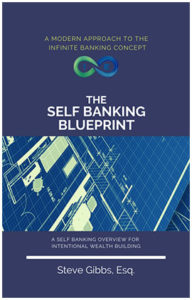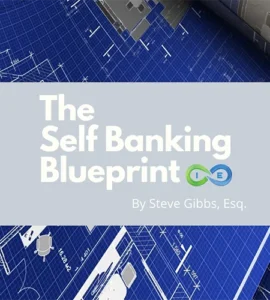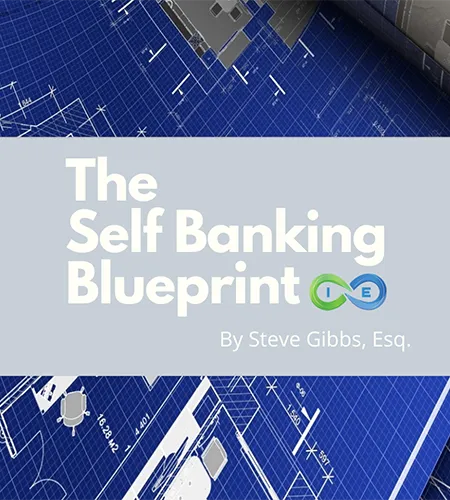The following article covers all things pertaining to premium financing life insurance. We’ll tackle the pros and cons of this approach to help you make a decision that’s in your best interests. If you have any questions or would like to see if premium financing is right for you, please give us a call today.
Comparing Real Estate and Life Insurance Assets
At Insurance and Estates we use a common comparison that posits permanent life insurance and real estate are similar ASSETS because they tend to share a number of common characteristics such as:
- Requiring some up front investment
- Requiring some annual maintenance costs
- Accruing equity (or cash value)
- Growing in a tax advantaged way
- Allowing for financial leverage
- Enabling acquisition of other assets
… and with today’s topic, we can add another item to the above list.
Just as you can finance the purchase of real estate, you can also finance life insurance premiums to increase cash flow, also known as retained capital.
Prerequisites When Considering Life Insurance Premium Financing
There are couple of prerequisites for those who are interested in either selling or purchasing life insurance through premium financing:
- This is for high net worth people with a need for a large amount of life insurance; and/or
- This is for people who may require liquidity for businesses and thus don’t want to come out of pocket for substantial premiums; and/or
- This is for those whom it makes financial sense to keep their money working harder in other areas.
Each of the above 3 will be considered in more detail to follow.
Premium Financing Life Insurance: The Good, Not So Good, and Downright Ugly
When Premium Financing is Ideal [the Good]
There is a definite time and place for premium financing life insurance and it generally looks like this:
An affluent individual…
- Needs life insurance; and
- Wants to leave a legacy; and
- Is still working; and
- Has substantial liquid assets; and
- Doesn’t want to liquidate assets to pay premiums; and
- Has money working hard in other areas.
If these aspects, or at least a majority, are present, then securing life insurance through premium financing may present a viable solution that offers a large amount of life insurance at a minimal cost.
To make this strategy more appealing than simply securing a death benefit, a cash value life insurance policy can be used to improve the overall performance and strategy.
For example, people often talk about premium financing and suggest that the only test is whether the affluent applicant’s assets (cash reserves or investments) are producing a better ROI elsewhere, concentrating on the applicant’s other financial ventures.
This would justify the cost of the loan because the money is being used for a positive financial arbitrage elsewhere.
A simple math example would be to ask “if the loan is costing 6.5% annually (based on current SOFR rates in 2025), how does this compare with the 10% that the applicant’s other investments are returning?”
However, this limited approach doesn’t consider the positive ROI that is occurring due to the accrual of cash value within a permanent life insurance policy.
As a quick reminder, in many articles, we’ve reviewed the various benefits of whole life insurance AND universal life insurance for cash value accumulation.
We’ve also discussed the ability to take policy loans from permanent life policies in order to create financial leverage and maintain the velocity of your money.
We suggest that all of these factors should be reviewed when considering a premium financing strategy because they can make it more appealing.
Permanent Life Insurance Benefits in Premium Financing
Permanent life insurance offers specific benefits that improve the premium financing picture.
For example, whole life insurance pays policy dividends, and this offers tax advantages for cash value accrual can generally range around 5-6% per year based upon history with most of the top dividend paying whole life insurance companies.
Universal life policies such as indexed universal life OR variable universal life offer market based opportunities for cash value accumulation within the policy that can range up to 10%+ in high market years.
So, we contend that not only should the cost of financing and the positive ROI earned elsewhere be considered, but the structure of the policy and the return on investment within the policy should also be included in the math.
In this way, premium financing for life insurance is also similar to real estate, because it isn’t just the equity that is being purchased but also the cash flow and tax advantages that can be realized by properly managing a real estate investment.
How Premium Financing Insurance Loans Work in 2025
If the right pieces of the puzzle (described in general above) are in place, an individual may be able to qualify for third party financing of the life insurance premiums.
This is an alternative to having to spend available business capital or liquidate other assets, simultaneously increasing cash flow and maximizing retained capital.
A premium financing loan is obtained from a licensed third party lender, which is usually a bank and occasionally an insurance brokerage.
This means that premium financing is really no different than any other 3rd party loan.
SOFR: The New Benchmark
Loan interest is often variable and based on SOFR (Secured Overnight Financing Rate) after LIBOR’s phase-out in June 2023. Interest is typically paid annually.
As of 2025, SOFR-based premium financing rates average 6.2-7.5%, up significantly from the historically low rates of 2020-2022. This rate environment requires more careful analysis of the financial arbitrage potential.
The loan balance of principal may typically be paid at any time until the death of the insured. However, loan terms such as when the loan is repaid, may vary and may affect the overall performance of the premium financing plan.
Non-Liquid Assets
Another aspect that affects the overall plan is how individual applicant’s non-liquidated assets perform.
The idea is to get a better rate of return (ROR) from the non-liquidated assets than what is being paid for the premium financing.
If cash value life insurance is being used, the cash value can be used to repay the loan depending upon the type of policy as can a portion of the death benefit.
In this way, the overall estate and the heirs are not being put at risk to repay the policy loan.
The Downside of Premium Financing
Variable Loan Considerations
There is often a catch when borrowing money from a third party lending institution. Thus, loan terms should always be carefully reviewed and negotiated whenever possible.
Because premium financing is primarily for affluent individuals, there is an even better likelihood, in my opinion, to be able to negotiate favorable loan terms in a way similar to negotiating private placement life insurance.
That said, loan rates for premium financing are generally variable (and NOT fixed) and we’re now operating in an environment of higher interest rates compared to the 2010s and early 2020s.
Current collateral requirements have also tightened, with lenders typically requiring 110-125% collateral coverage (up from 100-110% previously).
Thus, it’s more challenging in today’s environment to make the numbers work for premium financing loans compared to just a few years ago.
However, were interest rates to decline, those taking advantage of premium financing loans may find themselves in a more favorable financial scenario.
To keep this in perspective though, in an environment of changing interest rates, it is also highly likely that dividend rates on whole life insurance premium financing policies would also likely shift, although probably not as quickly.
No Tax Advantages
The other bad aspect of premium financing loans is that there are NO tax advantages on the financing itself.
What I mean is, when you take out a home equity loan on a personal residence, the interest on the loan is tax deductible.
Premium financing loans DO NOT offer this benefit, in the same way that life insurance premiums are generally NOT tax deductible unless certain life insurance strategies such as split dollar plans to compensate key employees are used.
Because the interest on a premium financing loan is not tax deductible, some suggest that a home equity loan may be a better options, thereby returning us to our analogy to real estate.
Still, if a cash value life insurance policy is being used, then tax advantaged cash value accumulation is being realized regardless of the interest on the loans.
Liability
Another downside to premium financing loans is that these loans are typically secured by other assets and are NOT non-recourse.
This means that taking premium finance loans may be a negative asset protection move for affluent individuals and business owners because it subjects other valuable assets to liability to pay the loan.
When Premium Financing Goes Wrong
Like any financial transaction, a premium financing loan has the potential to go terribly wrong.
Usually, an ugly result would involve a lender pursuing and attaching liens to other assets in order to collect on a policy loan that has gone into default.
As mentioned above, because policy loans are generally secured by other valuable assets and are NOT non-recourse, other assets can be pursued to satisfy the debt.
Couple this with variable interest rates and there is a certain amount of risk to be aware of and managed.
The Kai-Zen Strategy: Premium Financing for the Mass Affluent
One of the most significant developments in premium financing since 2023 has been the growth of Kai-Zen strategies, which make premium financing accessible to a broader market.
Unlike traditional premium financing focused exclusively on ultra-high-net-worth individuals, Kai-Zen targets executives and professionals with incomes of $100,000-$500,000.
How Kai-Zen Works
Kai-Zen operates through a structured financing arrangement where participants make premium payments for five years while a bank provides additional funding at a ratio of approximately three to one. This means for every dollar contributed by the participant, the bank adds approximately three dollars in financing.
The underlying product is typically an indexed universal life (IUL) insurance policy, which serves as collateral for the bank’s loan. In some cases whole life insurance is used, which we recommend for its more predictable performance characteristics.
What makes Kai-Zen unique is its trust structure. Participants don’t sign loan documents or undergo credit checks, as the arrangement is structured through a trust. The life insurance policy itself serves as collateral, and the trust handles the relationship with the lender. This structure aims to protect participants from personal liability while still providing access to the leverage benefits.
The Kai-Zen Process Timeline
The Kai-Zen process typically follows four distinct phases:
Phase 1: Initial Funding (Years 1-5)
- You make annual premium contributions plus a trust fee
- The bank provides matching premium funding at roughly 3:1 ratio
- The policy itself serves as collateral for the bank funding
- No personal guarantee or credit check is required
Phase 2: Bank-Only Funding (Years 6-10)
- Your contributions stop completely
- The bank takes over funding with full annual premiums
- The policy continues to accumulate cash value based on index performance
- The 0% floor protects against market declines
Phase 3: Growth Period (Years 11-15)
- No new premiums are paid by either party
- Policy continues to grow based on index performance
- Loan accumulates interest
- At year 15, the bank loan is typically repaid from policy values
Phase 4: Access Period (After Loan Repayment)
- You gain full access to policy benefits
- Can begin taking tax-free distributions through policy loans
- Maintain death benefit protection
- Living benefits become available (chronic illness, terminal illness)
Real-World Case Study: Executive Premium Financing
Meet David: A 54-year-old medical practice owner with an annual income of $450,000 and $2.2 million in liquid assets.
David wanted to secure $3 million in permanent life insurance but didn’t want to redirect cash flow from his practice expansion. He also wanted to build tax-advantaged retirement income.
The Solution: A Kai-Zen premium financing arrangement with the following structure:
- $85,000 annual premium for 5 years
- David pays $28,000 annually (1/3 of premium)
- Financing covers $57,000 annually (2/3 of premium)
- Collateral: Cash value plus a diminishing letter of credit
The Results:
- Total out-of-pocket: $140,000 over five years
- Projected cash value at age 65: $612,000
- Projected annual tax-free retirement income: $62,000 for 20 years
- Death benefit: $3 million
This approach allowed David to secure both protection and retirement income while keeping most of his capital working in his medical practice, where he was earning a 22% annual return on invested capital.
Advantages and Risks of Kai-Zen
Advantages of Kai-Zen
Kai-Zen offers distinct benefits that make it attractive for certain professionals:
- Enhanced Coverage Through Leverage: Get substantially more death benefit coverage than possible through traditional premium payments alone
- Limited Personal Liability: The trust structure eliminates the need for personal guarantees or credit checks
- Capital Efficiency: Keep more capital working in your business while still obtaining substantial insurance coverage
- Tax Advantages: Benefit from tax-deferred growth and potential tax-free access to cash value
- Business Planning Applications: Use for key person insurance, buy-sell funding, or executive benefit programs
Risks and Disadvantages
However, the strategy isn’t without significant risks:
- Limited Access and Control: No access to policy benefits until bank loan is repaid (typically year 15)
- Performance Dependencies: Success relies heavily on the underlying policy’s performance
- Interest Rate Risk: Rising rates can reduce potential benefits by increasing the loan balance
- Structural Complexity: Multiple parties and layers introduce operational and counterparty risks
- Lender Rights: The bank maintains rights to discontinue funding or demand early loan repayment
- Market Sensitivity: Economic conditions can significantly impact long-term success
Ideal Candidates
Kai-Zen tends to work best for:
- High-income professionals between ages 18-65
- Those who have maxed out traditional retirement planning options
- Individuals comfortable with long-term financial commitments
Current Premium Financing Trends in 2025
The premium financing landscape has evolved significantly in recent years:
- Hybrid Collateral Arrangements: Combining cash value, letters of credit, and marketable securities to create flexible collateral strategies
- Exit Strategy Planning: Greater emphasis on defined exit strategies at policy inception, with structured loan repayment options
- Floating-to-Fixed Conversions: New options to convert variable rate loans to fixed rates after a certain period
- Investment-Linked Premium Financing: Tying loan terms to specific investment performance metrics
Business owners now represent the majority of premium financing clients, followed by real estate investors and medical professionals.
Frequently Asked Questions About Premium Financing
What minimum net worth is required for premium financing?
Traditional premium financing typically requires a net worth of at least $5 million, though the Kai-Zen strategy has made premium financing accessible to individuals with incomes as low as $100,000 and net worth of $1 million+.
How does SOFR affect premium financing loan rates?
SOFR (Secured Overnight Financing Rate) replaced LIBOR in 2023 as the benchmark for premium financing loans. SOFR tends to be slightly more stable than LIBOR but still fluctuates with Federal Reserve policies. As of 2025, most premium financing arrangements use SOFR plus a margin of 2-3%.
What happens if my policy underperforms projections?
If your policy underperforms, you may face collateral calls requiring additional assets to secure the loan. Most lenders now require policy performance reviews every 2-3 years with provisions for additional collateral if performance falls below projections.
Can I exit a premium financing arrangement early?
Yes, you can exit early, but it often involves paying off the loan balance which may require liquidating other assets if the policy cash value is insufficient. Modern premium financing arrangements typically include pre-planned exit strategies at years 10, 15, or 20.
Are premium financing interest payments tax-deductible?
Generally, no. Unlike mortgage interest, premium financing loan interest is typically not tax-deductible for individuals. However, in certain business situations where the insurance serves a business purpose, some interest may be deductible. Always consult with a tax professional for your specific situation.
Conclusion
We suggest that at a minimum, a whole life policy built for cash value growth or indexed universal life policy should be used for this type of strategy in order to offset the other risk that naturally arises from borrowing the funds.
In today’s higher interest rate environment, the arbitrage opportunities in premium financing require more careful analysis than in the past decade. However, for the right situations, premium financing remains a powerful tool for wealth accumulation and protection.
Are you interested in exploring if premium financing is the right course for you? Please give us a call today for a complimentary strategy session.
Explore Premium Financing with Kai-Zen for Your Financial Goals
Discover if premium financing, including the innovative Kai-Zen strategy, is the right fit for your wealth-building and protection needs. Our expert advisors will provide a personalized analysis to help you navigate the complexities and maximize the benefits of leveraged life insurance.
- ✓ Receive a tailored evaluation of how premium financing can enhance your financial strategy
- ✓ Learn how Kai-Zen’s trust structure minimizes personal liability and simplifies financing
- ✓ Understand the tax-advantaged growth potential and cash flow benefits
- ✓ Get a clear breakdown of risks, collateral requirements, and exit strategies
Schedule your complimentary 30-minute premium financing consultation today and see if Kai-Zen is right for you.
No obligation. No pressure. Just expert guidance to determine if premium financing aligns with your business and financial objectives.






6 comments
Robert V Donovan ChFC CFP
Many thanks for your insightful comments re: premium financing of life insurance premiums.
I have placed more than twenty (20) cases and have not had one (1) bad outcome — obviously the approach is not for everyone and indeed not many qualify ….although in today’s “new” economic paradigm many more may qualify …. if only for 6 months….! The advent of IUL has made the strategy more compelling particularly in todays’ interest rate environment with long-term leveraged arbitrage more readily probable — although as you point out — risks remain. Key factors to make the scenario viable are risk mitigation and potential exit strategies. Again, many thanks for your comments. All the best, Bob
Insurance&Estates
Thank you for connecting Bob!
Best, Steve Gibbs for I&E
jason p
Horrible biased and one sided argument.
Probably just did a 5 minutes google research before writing this article.
Insurance&Estates
Hello Jason, we appreciate you reading and commenting; however, it appears that we did more research and spent more time on our article than you did on this comment. Perhaps you can enlighten our team with actual facts to support your accusation of “horrible” and “one sided”. I’m guessing you mean one sided in not promoting your strategy or pet product. Let me offer you a suggestion. Your comment was really an emotional reaction, without substance, and this is characteristic of our time which is plagued by insane opinionated ranting and raving. So here’s the tip: offer some details of substance when you dispute something, otherwise your comment is of no value. Please feel free to supplement it. I sincerely hope that our society can move back toward a more intellectual and open minded approach to discussing difference because a variety of differing opinions is actually okay.
Have a blessed day buddy.
Best, Steve Gibbs for I&E
Trey J
Great article. I learned a lot about premium financing especially the positives and negatives aspects of borrowing the money to finalize the transaction.
Insurance&Estates
Hi Trey,
Happy Independence Day. Thank you for the kind feedback. We are glad you found the article on premium financing helpful.
Have a great 4th of July,
Sincerely,
I&E